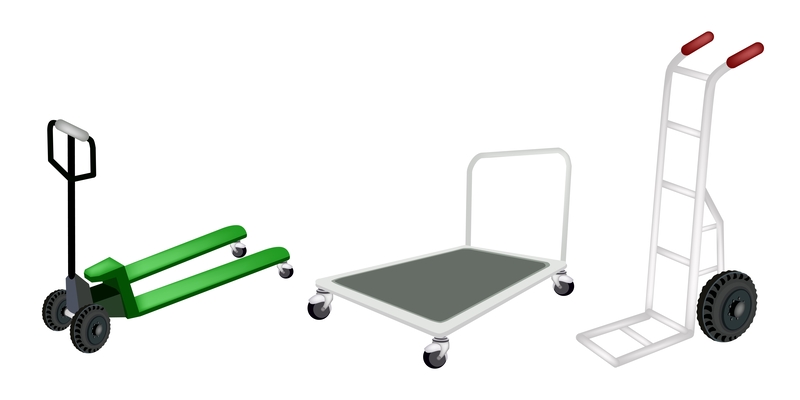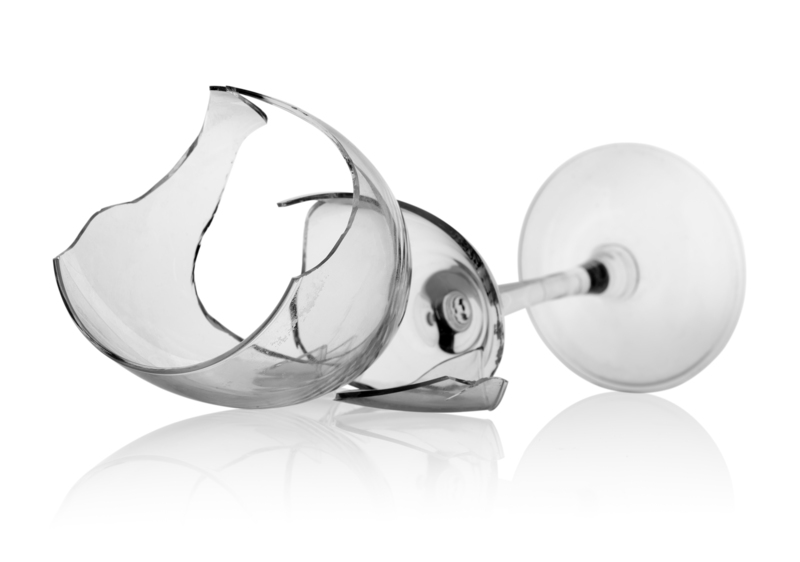Expert Advice on Handling Heavy Lifts Without Help
Are you faced with the daunting task of moving bulky items on your own? Whether it's for work, moving house, or everyday tasks, managing heavy lifts without help can seem overwhelming. However, with the right strategies, techniques, and safety precautions, you can tackle heavy lifting solo without risking injury or damaging your belongings. In this comprehensive guide, you'll discover expert advice on handling heavy lifts without help, get answers to your questions, and learn top tips to make the process safer and easier.

Understanding the Risks of Lifting Heavy Objects Alone
Before attempting to lift anything substantial by yourself, it's crucial to recognize the inherent risks involved. Lifting heavy objects without assistance can lead to:
- Muscle strains and sprains
- Back injuries, including herniated disks
- Crush injuries from dropped items
- Tripping and falling hazards
According to ergonomics experts and physiotherapists, most injuries occur due to improper lifting techniques, underestimating the weight, and ignoring fundamental safety advice. Prioritizing safe handling is essential whenever you're managing heavy items alone.
Top Preparation Tips: Before You Lift
Preparation is key to safely managing heavy lifting without assistance. Here's how you can get ready for the task:
1. Assess the Load and Your Limits
- Determine the actual weight and size of the object. Many injuries happen due to misjudging load weight.
- Know your own physical limits. If you're unsure, err on the side of caution.
2. Plan Your Path
- Ensure the area is clear of obstacles, spills, and tripping hazards.
- Check the surface--avoid lifting heavy objects alone on slippery or uneven floors.
- Know your destination and make sure you have enough space to set the item down safely.
3. Prepare the Right Equipment
- Use mechanical aids: dollies, hand trucks, sliders, or lifting straps can significantly reduce effort and risk.
- Wear supportive shoes with non-slip soles.
- Put on gloves to enhance your grip and protect your hands.
4. Warm Up Your Muscles
- Perform dynamic stretches to prime your body, particularly your back, shoulders, and legs.
- A conditioned body is less prone to strains during solo heavy lifting.
Expert Lifting Techniques: How to Move Heavy Objects Alone
Correct technique is the foundation of safe heavy lifting without help. These expert tips can save you from injury:
Follow the Rules of Safe Lifting
- Bend at your knees, not your waist. Squat down by bending your knees and keeping your back straight.
- Keep the object close. Hold the item close to your body near your center of gravity.
- Maintain a neutral spine. Your back should stay as straight as possible to prevent injury.
- Lift with your legs, not your back. Press through your heels and use the strength of your thighs and hips.
- Avoid twisting. If you need to change direction, pivot with your feet rather than twisting your torso.
- Move slowly and steadily. Rushing increases your risk of dropping the item or straining a muscle.
Use Leverage and Sliding Techniques
- Whenever possible, slide instead of lifting. Try placing thick towels or furniture sliders under heavy items.
- If you must lift, tilt and support one end at a time rather than lifting the entire item at once.
- Leverage tools like crowbars or ramps can help lift or move heavyweight objects with minimal force.
Break Down Large Loads
- Disassemble furniture or appliances to reduce their weight and bulk.
- Break up large boxes into smaller, more manageable loads.
Get a Firm Grip
- Look for gripping points, handles, or indents on the object.
- Use gloves with a rubberized palm for extra traction.
Essential Tools for Solo Heavy Lifting
Having the right tools can transform a risky, laborious job into a safe, manageable process. Consider these essential lifting aids:
- Dollies/Hand Trucks: Ideal for moving boxes, furniture, and appliances over distances.
- Furniture Sliders: Let you glide heavy items across floors with minimal effort.
- Lifting Straps: Distribute weight evenly and keep your hands free.
- Stair Climbing Carts: Designed for safe navigation of steps with loads.
- Forearm Forklifts: A specialized type of lifting strap that allows for ergonomic carrying.
- Ramps: Essential for moving objects from one level to another.
Creative Solutions When Lifting Alone
Not every scenario permits the perfect equipment. If you're improvising, try these strategies for solo heavy lifts:
- Repurpose rolled-up rugs or pipes underneath loads for a "rolling" effect.
- Use strong belts or rope as makeshift lifting straps--just ensure they won't break under the load.
- Enlist gravity: carefully lower items down stairs instead of lifting, controlling the descent with straps.
Dos and Don'ts of Lifting Heavy Weights Without Help
Avoid common pitfalls that can lead to injury or damage. Here are some crucial dos and don'ts when moving heavy objects solo:
Do:
- Ask for advice--even if you can't get physical help, someone experienced may suggest a smarter approach.
- Test the weight first--give the item a light push or lift to gauge effort.
- Set down items slowly and carefully--always keep control.
- Take breaks as needed--don't rush.
Don't:
- Don't try to catch falling objects--step back to avoid injury instead.
- Don't overload your back--make multiple trips if necessary.
- Don't ignore pain or discomfort--stop immediately if you feel anything unusual.
- Don't underestimate awkwardness--oddly shaped items can be as hard to move as heavy ones.
Frequently Asked Questions: Lifting Heavy Objects Without Help
How much weight can one person safely lift alone?
There are no universal answers, as safe lifting capacity varies by build, strength, age, and general health. However, Occupational Safety and Health Administration (OSHA) guidelines recommend a maximum of about 50 pounds (22.7 kg) for most healthy adults under optimal conditions. Factors like object shape and carrying distance also play a big role. If you're unsure, always err on the side of caution.
What if I must lift objects heavier than 50 pounds?
For objects over 50 pounds, experts suggest using mechanical aids or breaking the loads down. If neither is possible, consider hiring professional movers or requesting assistance--your health is always more important than one heavy lift.
Can regular exercise help with heavy lifting?
Absolutely! Strong core, back, and leg muscles are central to safe heavy lifting. Regular strength training and flexibility exercises will increase your lifting ability and reduce injury risk.
What are warning signs that I should stop lifting?
- Shooting or sharp pain
- Muscle spasms
- Sudden numbness or tingling
- Severe shortness of breath
- Dizziness or loss of balance
If you feel any of these, stop immediately and seek medical attention if symptoms persist.
Practice Makes Perfect: Training for Safe Heavy Lifting Alone
Handling heavy lifts without help is a skill you can build up. Follow this regular practice routine to boost your confidence and safety:
- Practice lifting with lighter objects using correct form until it becomes second nature.
- Increase weight slowly, focusing on technique over brute strength.
- Record yourself or ask someone to observe your form for feedback and correction.
*Remember: Technique is more important than strength when working alone.
Post-Lift Recovery Tips
The way you finish each lift is just as important as your approach. After completing heavy lifting tasks alone:
- Stretch your muscles, especially your back, legs, and arms.
- Hydrate to help muscle recovery.
- Apply ice to sore spots if needed.
- If you feel pain, get medical advice before your next lift.

When to Seek Professional Help
Some jobs simply aren't safe to attempt alone. Hire professionals or ask for assistance if:
- The item weighs more than you can safely handle, even with tools.
- The object is large, fragile, or irreplaceable.
- You have a history of back, knee, or other injuries.
- There are tricky stairs or tight corners on your route.
Conclusion: Mastering Heavy Lifts Solo Is Possible with Caution
With the right preparation, knowledge, and tools, handling heavy lifts without help can be manageable and safe. Always prioritize your health and safety over speed or convenience. When in doubt, seek assistance or use additional equipment to prevent injury. By following these expert lifting tips, you'll be better equipped to tackle challenging tasks, maintain your well-being, and protect your property. Remember, smart planning and technique are your best allies for any heavy lift--especially when working alone.
If you found this guide helpful, share it with others and bookmark it for future reference--safe lifting habits can prevent countless injuries and make your day-to-day life easier!



